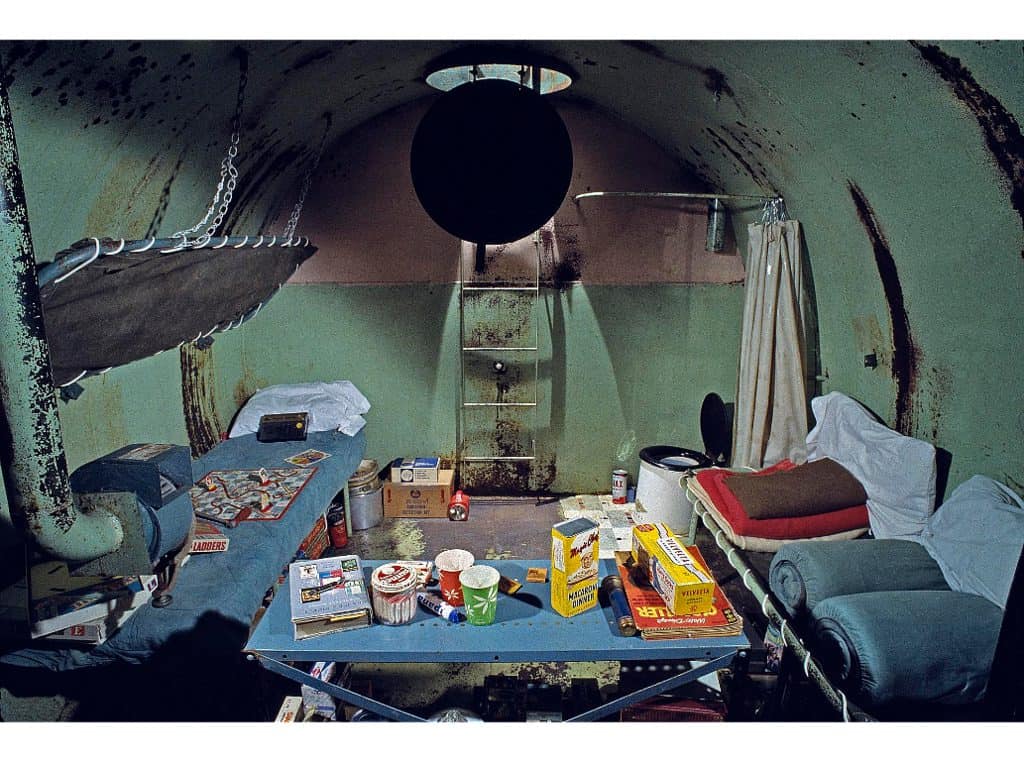This article discusses Why Were Fallout Shelters Built During The Cold War, hopefully providing additional knowledge for you.

Why Were Fallout Shelters Built During the Cold War?
During the Cold War era, the looming threat of nuclear war prompted governments worldwide to construct fallout shelters as a means of preserving life in the event of an atomic catastrophe. These shelters were designed to shield occupants from radioactive fallout, the deadly byproduct of nuclear explosions. As tensions between the United States and the Soviet Union heightened, fallout shelters became an essential component of civil defense strategies.
The development of the atomic bomb in 1945 ushered in a new era of warfare, characterized by the unprecedented destructive power of nuclear weapons. The devastating effects of the nuclear attacks on Hiroshima and Nagasaki highlighted the urgent need for protective measures against the aftermath of atomic explosions. Fallout, composed of radioactive particles dispersed by nuclear blasts, posed a significant health hazard, causing radiation sickness, cancer, and other long-term effects.
Government Initiatives: Establishing a Shelter System
In response to the nuclear threat, governments around the world initiated comprehensive shelter programs. The United States, recognizing the vulnerability of its cities to nuclear attack, launched the National Fallout Shelter Survey in 1958. This ambitious project aimed to identify and designate millions of potential fallout shelters in public buildings, schools, hospitals, and other structures across the country. The program also provided guidelines for shelter construction and maintenance, ensuring the feasibility and effectiveness of these protective spaces.
Public shelters were not the only focus of civil defense efforts. Individuals and families were also encouraged to construct private fallout shelters on their properties. The government provided blueprints and technical assistance to support the construction of these shelters, which varied in size and complexity depending on the resources and needs of the occupants. Some shelters were modest, designed to accommodate a small family unit, while others were more elaborate, equipped with supplies, ventilation systems, and even decontamination facilities.
Shelter Design and Construction: Ensuring Protection from Fallout
The design and construction of fallout shelters were crucial factors in ensuring the survival of occupants in the event of a nuclear explosion. Shelters were typically located underground, where they could provide maximum protection from radiation and blast effects. Thick walls, reinforced with concrete or other materials, were essential to shield occupants from the penetrating power of radiation. Air filtration systems were installed to remove radioactive particles from the air, ensuring a breathable environment within the shelter.
The size and capacity of fallout shelters varied depending on the intended occupants. Shelters designed for families or small groups typically accommodated up to ten individuals, while larger shelters could house hundreds of people. Essential supplies were stockpiled within the shelters, including food, water, medical kits, and first aid supplies. These supplies were intended to sustain occupants for several days or even weeks, providing them with the resources necessary to survive until the effects of fallout had diminished.
Evolving Threat and the Waning Focus on Fallout Shelters
As the Cold War progressed, the focus on fallout shelters gradually waned. The development of intercontinental ballistic missiles (ICBMs), capable of delivering nuclear weapons over long distances, meant that fallout shelters could provide limited protection against a large-scale nuclear exchange. Additionally, advancements in nuclear weapons technology led to the creation of weapons with increased destructive power, further reducing the effectiveness of fixed fallout shelters.
Despite the diminished emphasis on fallout shelters, these structures remain a testament to the fears and uncertainties of the Cold War era. They serve as a reminder of the devastating potential of nuclear weapons and the lengths to which governments went to protect their citizens from the catastrophic consequences of nuclear war. Today, many former fallout shelters have been repurposed for other uses, such as storage facilities, museums, and even tourist attractions, offering a glimpse into the history of nuclear preparedness.
FAQ: Addressing Common Questions
Q: Why were fallout shelters necessary during the Cold War?
Fallout shelters were designed to protect people from exposure to radioactive fallout, which is a deadly byproduct of nuclear explosions.
Q: How did fallout shelters protect occupants from radiation?
Fallout shelters were typically built underground and made of thick, reinforced materials. This provided shielding from radiation and blast effects.
Q: How long were people expected to stay in fallout shelters?
The length of time spent in a fallout shelter would depend on the severity of the nuclear attack and the amount of radiation in the surrounding environment. Occupants were advised to stay in the shelter until it was safe to emerge.
Q: What supplies were stored in fallout shelters?
Fallout shelters were to be stocked with food, water, medical kits, and other essential supplies to sustain occupants for several days or weeks.
Q: Are fallout shelters still relevant today?
While the threat of nuclear war may have diminished, fallout shelters remain a reminder of the destructive power of nuclear weapons. They are also used for other purposes, such as storage facilities and museums.
Conclusion
Fallout shelters were a product of the Cold War era, a time marked by heightened nuclear tensions and the constant threat of atomic annihilation. These shelters were constructed to provide protection for civilians in the event of a nuclear attack, shielding them from the lethal effects of radioactive fallout. While the threat of nuclear war has receded, fallout shelters remain a symbol of the fears and uncertainties that defined the Cold War era.

Image: survivalgearandfirstaid.com
You have read an article about Why Were Fallout Shelters Built During The Cold War. We express our gratitude for your visit, and we hope this article is beneficial for you.